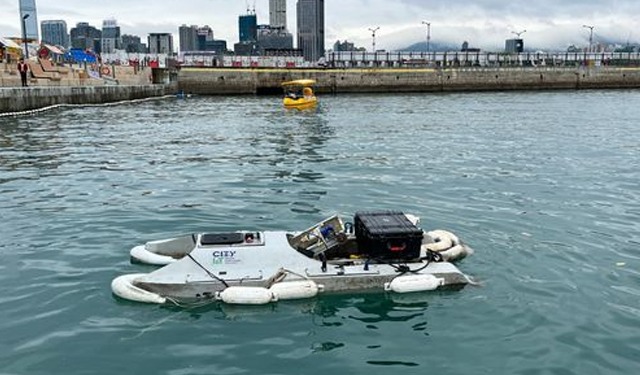Clearbot for water conservation – Today, the preservation of the marine environment has become an absolute priority, given the escalation of problems such as plastic pollution, oil spills and the proliferation of invasive species. This is the context for an innovative project that marks a significant step towards cleaning and maintaining the waters: the Clearbot, a battery-powered workboat designed to operate effectively in coastal areas and congested inland waters.
The Clearbot project was born in 2019 from the initiative of Sidhant Gupta and Utkarsh Goel, moved by the urgency to address the inadequacy of manual cleaning operations along Bali’s beaches. Their vision led to the creation of a functional prototype, designed, built and tested in the very waters of Bali. This marine robot uses advanced technologies, such as artificial intelligence (AI), lidar and navigation sensors, to locate and collect floating litter.
Functionality and applications
According to Lloyd’s Register (LR), the maritime classification body that has closely monitored Clearbot’s progress, this vessel stands out for its versatility and potential environmental impact. Its applications range from floating waste collection and foam recovery to rapid response in the event of an oil spill. In addition, Clearbot also proves to be a valuable tool for combating water hyacinth infestations, performing bathymetric surveys and even delivering goods to hard-to-reach areas.
Technology and innovation
The key element that distinguishes Clearbot is the use of artificial intelligence for autonomous navigation and post-processing analysis of collected waste. This technology allows Clearbot to identify and classify waste efficiently, maximising the impact of cleaning operations. The combination of lidar and sensors also ensures safe and accurate navigation, which is crucial when operating in congested waters or near obstacles.
Clearbot’s ambition goes beyond simple water cleaning. The team behind this project aims for a global deployment of the technology, highlighting the system’s adaptability to different environmental contexts and its potential applications in a variety of marine and coastal services. Clearbot’s innovative approach offers a new perspective on marine conservation strategies, promising a significant impact in combating pollution and protecting aquatic ecosystems.
Clearbot represents a clear example of how technology can be used to address some of the most pressing environmental challenges of our time. With its advanced design and multiple applications, this project is at the forefront of water conservation, paving the way for future innovations in the field of marine conservation.
Clearbot for water conservation









